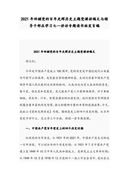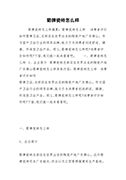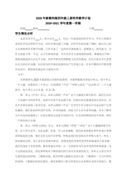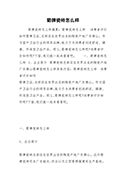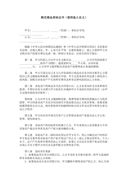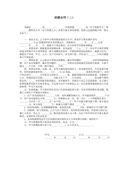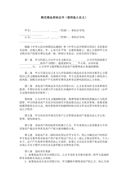It must belong to Carla教案(精选2篇)九年级英语教案
It must belong to Carla教案(精选2篇)
It must belong to Carla教案 篇1
unit 5 it must belong to carla.ⅰ. learning objectives 教学目标skill focuslearn to make inferences with “must”, “might”, “could”, and “can’t”.talk about the words you don’t understand or something that worries you.
languagefocus功能句式make inferences (p34- p35)whose…is this?it must be…talk about the words you don’t understand or something that worries youwhat do you think …mean?it might mean …词汇1. 重点词汇picnic, possibly, drop, count, final, owner, sky, catch, interview, noise, wind, neighbor, director, smell, finger, lift, stone2.认读词汇belong, author, symphony, optometrist, algebra, crucial, anxious, worried, oxford, chase, creature, unhappy, extremely, footstep, garbage, mystery, monkey, escape, bark, ant, dishonest, pretend, attempt, hemingway, fred, mark twain3.词组belong to, hair band, use up语法must, might, could and can’t for making inferences strategyfocus1. sequencing 2. deducing culture focusdifferent opinions about dreams.different proverbs show different cultures. ⅱ.teaching materials analyzing and rearranging 教材分析和重组1.教材分析本单元以it must belong to carla为话题,共设计了三部分的内容:section a该部分有4个模块:第一模块围绕whose volleyball is this? 这一话题展开思维(1a)、听力(1b)、口语(1c)训练;第二模块围绕上一模块中的话题进行听力(2a-2b)、口语训练(2c);第三模块继续围绕前两个模块中的“making inferences”展开训练。训练形式为阅读排序(3a)和两人问答(3b);第四模块仍就上一话题展开讨论。section b该部分有4个模块:第一模块要求根据图画和所提供的单词写出合理的句子;第二模块在听力(2a-2b)和分角色口语训练(2c)的基础上,继续进行“推测”训练; 第三模块围绕“strange events in bell tower neighborhood”这一话题展开阅读(3a)和写作(3b-3c)训练;第四模块以dream为话题展开小组活动。self check该部分有3个模块:第一模块以填空形式对所学词汇进行训练;第二模块就8个谚语展开阅读和讨论。第三模块要求找出不同类的词。2.教材重组和课时分配period 1(section a: 1a, 1b, 1c) new function presentingperiod 2 (section a: 2a, 2b, 2c, 3a, 3b, 4) practiceperiod 3 (section b: 1, 2a, 2b, 2c, 3a, 3b, 3c, 4 ) integrating skillsperiod 4 (self check: 1, 2, 3 & workbook) comprehensive reviewⅲ. teaching procedures and ways 教学过程与方式
period 1 new function presentinglanguage goals 语言目标1. words & expressions 生词和短语picnic, author, belong, belong to 2. key sentences 重点句子whose volleyball is this? (p34) it must be carla’s. (p34) ability goals 能力目标enable the students to infer the owners of the things using “must”, “might”, “could”, and “can’t”.emotion & attitude goals 情感和态度目标learn to infer the owners of the things purposefully.strategy goals 策略目标listen and match each person with a thing.culture awareness goals 文化意识目标enable the students to guess the owners of the unknown things using “must”, “might”, “could”, and “can’t”.teaching important points教学重点learn to make inferences using “must”, “might”, “could” and “can’t”.teaching procedures and ways 教学过程与方式step i revision and lead-inask the students to do a game guessing the owners of things. t: in the last unit, we have learnt what we should do if we are in an imaginary situation. if we had problems, we would ask for advice or help. now, imagine, if you have found something and don’t know who the owner is, what would you doss: we would try to guess who the owner is, then give it to him/her. t: now, boys and girls, close your eyes. collect some books from the students and put them together, asking the students to guess whose books they are.t: ok, open your eyes, please. hold up one of the books.t: whose book is this?s1: bill’s ?t: it might be bill’s. let’s ask him. bill, is this your book?s2: no, it’s not mine.t: well, it isn’t bill’s. he says it’s not his.s2: is it anna’s?t: let’s ask her. anna, is this your book?s3: no, it isn’t.t: so it’s not anna’s book. and it can’t be maria’s. because i didn’t take hers. then whose book is it?s1: is it lee’s?t: yes, it doesn’t belong to bill, anna or maria. so it must be lee’s.step ii brainstorming (1a: p 34) t: when we talk about things we are not sure of, we use the words could, might, can’t and must. it could be bill’s. it might be bill’s. it can’t be maria’s. it must be lee’s. now, look at 1a on page 34. what can you see in the picture? s: we can see a hat, a t-shirt, a volleyball, a cd, a toy car, a plate, three cups, some books and magazines. t: it isn’t hard for us to judge who the things belong to. read the examples first, and then write the things you see in the correct columns in the chart as soon as possible.then ask the students to read their answers. s: sure. the hat, the jacket and the t-shirt must belong to clothing. the volleyball, the cd, the toy car, the magazine, and the book must belong to fun things. the plate, the cups must belong to kitchen things.step iii listening and speaking (1b: p 34)ask the students to read the instruction in 1b. t: read the instructions and find out what you are asked to do.s1: to match each person with a thing and a reason.t: as you listen, draw lines to connect the person in the first column with the thing in the second column. then draw another line to match the thing in the second column with the reason in the third column.ask the students to listen to the recording for the first time.t: now listen for the first time to get the key information: who, what and why. keep them down while listening.point out the sample answer.t: the name carla in the first column is connected to volleyball in the second column because that’s the thing they are talking about. and the word volleyball in the second column connected with the sentence she loves volleyball. in the third column.ask the students to listen to the recording again. t: now listen to the conversation again. this time connect the items in the three columns.play the recording again.t: we heard just now that the owners of the things and the reasons why the things belong to them. next, make conversations with the help of the information in the chart in activity 1b. first, you’d better read the example in the box ask the students to make dialogues after the model. t: now work with a partner and practise making conversations. sample dialogue 1:s1: look! whose toy car is this?s2: it must be jane’s little brother’s. because he was the only little kid in the picture.sample dialogue 2:s3: look! whose book is this?s4: it must be mary’s. because hemingway is her favorite author.sample dialogue 3:s3: whose cd is this?s4: it must be grace’s. because she always listens to classical music.step iv homework1. ask the students to do more practice as required in 1c on page 34.ask the students to prepare for the next period: if you are not sure of something, how do you make inferences?
It must belong to Carla教案 篇2
it must belong to carla教案
教学目标
学会(对当前发生的事)做出推测和判断
(learn how to make inferences)
联系使用本单元的目标英语
(practise using the target language.)
in this unit we will learn to use could,may,might,must and couldn’t/can’t to show how certain you are about a present situation.and tell the difference between them.we will also learn to practice“whose questions”.
一、目标语言(target language)
1.whose volleyball is this?
it must be carla’s.she loves volleyball.
2.whose french book is this?
it could be ali’s.she studies french.
3.whose guitar is this?
it might belong to alice.she plays the guitar.
4.whose t-shirt is this?
it can’t be john’s.it’s much too small for him.
二、重点词组(key phrases)
1.belong to 属于
2.call the police 报警
3.because of 因为
4.escape from 逃避
5.use up 用光、用完
6.make guesses 做出猜测
7.no more 不再
8.be careful of 留神、当心
9.hair band 发带
10.chinese-english dictionary 汉英词典
11.oxford university 牛津大学
12.classical music 古典音乐
13.the only kid 独生子,唯一的孩子
重、难点知识讲解
一、重点词汇
1.belong to 属于
eg.these books belong to me.
这些书是我的。
who(m)does this belong to?
这是谁的?
he belongs to the swimming club.
他是这个游泳俱乐部的成员。
注意:belong to是一个不及物动词短语,不能用被动语态.
this pen is belonged to me. (x)
this pen belongs to me. (√)
2.because与because of 因为,由于
because通常是说话人用来陈述理由或原因,后面接从句,作为原因状语从句。
eg.he didn’t attend the meeting because he had too much work to do.
他因为要干的活儿太多,没来参加会议。
because of是一个介词短语,后面接名词、代词及名词性短语。可置于句首和句末,常用来表示引起时间发生的直接原因。
eg.because of illness,the boy did not go to school.
因为生病,这个男孩没有去上学。
they had to stay at home bacause of a heavy rain.
因为一场大雨,他们只好呆在家里。
he walked slowly because of his bad leg.
他走的很慢是因为腿有毛病。
bacause of his wife(‘s)being there,i said nothing about it.
因为他妻子在场,我对此事一字未提。
3.use up 用光,耗尽
eg.i’ve used up all the money.
我把钱全部用光了。
she used up the chicken bones to make soup.
她把鸡骨头全用来熬汤了。
i’ve used up all my stength.
我耗尽了体力。
4.too much与much too
too much通常位于动词之后,修辞动词;too much后面也可接名词。
eg.don’t eat too much.
别吃得太多了。
he works too much.
他工作太辛苦了。
he has too much work to do.
他有很多工作要去做。
much too则常用在形容词或副词之前,修饰形容词或副词。
eg.the dress is much too long for me.
这衣服我穿太长了。
i got into the taxi and drove much too fast.
我上了出租车,并开得飞快。
5.drop v.落下,掉落;扔下;(使)变弱,降低
eg.she dropped the vase on the floor.
她失手把花瓶掉在了地板上。
the monkeys dropped the basket and ran away as soon as they saw the children.
猴子们一看见孩子们就扔下篮子逃跑了。
her voice dropped to a whisper.
她的声音已降低成轻言细语了。
二、重点句型
1.young people need to sleep.年轻人需要睡(足够的)觉。
need既可用作情态动词,也可以用作实义动词。用作情态动词时,它就像can,may,must一样,没有人称和数的变化,后面跟不带to的动词不定式,即动词原形,构成否定句和疑问句时,不借助于助动词do,而采用need not(needn’t)的形式。注意:need做情态动词时,多用于否定句和疑问句中。
例如:
need i do it again?
我是不是需要把它再做一遍?
a bus is coming,so i needn’t take a taxi.
公共汽车来了,因此我不必乘出租车了。
we have plenty of time.so i needn’t drive quickly.
我们有足够的时间,所以我不必开车开得太快。
need用作实义动词时,有人称和数的变化。后面要跟带to的动词不定式,构成否定句和疑问句时,要借助于助动词do。这种用法可以用于肯定句也可以用于否定句和疑问句。
eg.you need to tidy your room today.
今天你需要整理房间。
he needs to go to the station.
他需要去车站。
does he need to look after his little brother at home?
他需要在家里照看他的小弟弟吗?
people don’t always need what they have.
人们并不总是需要他们所需要的东西。
2.—we have a lot of rules at my house.
我们家有许多规矩。
—so do we.
我们也是。
so do we的句型结构为so+助动词do+主语,是倒装句,重音在主语上,意为“我们也是”。so后也可以情态动词或连系动词,主要根据前一句的情况来决定。例如:
you finished your homework,and so did i.
你做完了家庭作业,我也是。
i am a student.so is my brother.
我是一个学生,我哥哥也是。
john can drive a car,and so can mary
约翰会开车,玛丽也会。
如果前后两个句子说明同一个人或事物,表示强调前一句的情况,则so后的句子不用倒装,表明情况就是如此。例如:
you asked me to leave,and so i did.
你要求我离开,我这样做了。
your pen may be in your bag.oh,so it is.
你的钢笔可能在你包里。噢,是这样。
his brother studies very hard,so he does.
他弟弟学习很努力,他就是这样。
“so+助动词/情态动词/连系动词+主语”这一结构是说明肯定的情况,如果表示否定,则so应改为neither或nor。例如:
i’m not watching tv. neither(nor)is my cousin.
我没有看电视,我表哥也没看。
he didn’t finish reading that book. neither(nor)did i.
他没读完那本书,我也没读完。
“i don’t like beijing opera.”“neither(nor)do i.”
“我不喜欢京剧。”“我也不喜欢。”
3.if you have any idea where it might be,please call me.
(1)if you have any idea…=if you know…意为“如果你知道……”
(2)where it might be作“have any idea”的宾语从句。
(3)idea n.主意、想法
eg.a man full of ideas 主意很多的人
另外,idea还指“想象,(模糊的)想法”。
you can have no idea of what he said.
你根本想象不到他说了些什么。
(4)any除了用于否定句、疑问句中,还用于if引导的条件从句中,意为“若干的,有多少”。
eg.if you have any time,i’d like to talk.
如果你有(些许)时间,我希望与你谈谈。
if you have any intersting books,please lend me some.
你如果有什么有趣的书,请借我几本。
4.my parents called the police,but they can’t find anything strange.
我的父母亲报了警,但他们也没能发现奇怪的东西。
(1)police是名词,通常用the police指“警察、警方”,the police被视为集体名词,其谓语通常要用复数形式。如果指一个警员,要用a policeman或a policewoman。
eg.you should call the police if you meet a thief.
你遇到贼的话,应该报警。
the police are chasing(after)the thieves.
警方正在追赶窃贼。
(2)something,anything等复合不定代词的修饰词要放在其后面。
eg.there isn’t anything wrong with this computer.
这台电脑没毛病。
is there anything new in today’s newspaper?
今天的报纸上有新东西吗?
5.in my dream,i was swimming in an ocean of paper.
在我的梦里,我浸泡在数不尽的试卷中。
an ocean of,或oceans of意为“极多的,用不尽的”,广泛用于口语中。介词of后常接不可数名词或可数名词复数形式。
例如:don’t worry—we’ve got oceans of time.
别担心—我们有的是时间。
there are oceans of food and drinks there.
那里有大量的食物和饮料。
三、语法(grammar focus)表示推测的情态动词(modals of probability and possibility)
1.在英语中,表示对某件事物的确定程度,即表示推测的时候,我们通常会用到以下情态动词,must,can/could,may/might
2.根据确信程度的不同,你可以选择用不同的词。
(1)20%—70%certain(possible):could,might,may
when you think that something is possible,but you are not very sure,you use could,might or may.
当你不确定某件事情是否是真实的,表示“可能”“或许”的意思时,可以用could,might,may来表示。may表示可能性要稍大一些。
(2)70%—90%certain(very possible):can
when you are quite sure about something,you use can.
(如果你对某件事把握较大,就用can表示“很可能“)
eg.attending a ball can be exciting.
it can be very windy on the hill.
(3)≥90%certain(probable):must
when you are very sure of something,you use must in positive sentences and cannot or can’t in negative sentences.
(如果你非常确信某事是真的,就用must.表示“一定是”“肯定是”,用cannot或can’t表示“一定不是”“肯定不是”)
eg.jane’s light is on.she must be at home.she can’t be out.
简的房间里开着灯。她一定在家,不会出去的。
that can’t be mary—she is in hospital.
那不可能是玛丽—她住院了。
mary must have some problem:she keeps crying.
玛丽一定有什么问题:她一直在哭。
he can’t have slept through all that noise.
那么吵他不可能睡得着觉。
注意:
(1) 情态动词后面必须用动词原形
jack could live here. (√)
jack could lives here. (x)
(2) 情态动词没有人称和数的变化
alex might know him. (√)
alex mights know him. (x)
(3) maybe不是情态动词,而是副词,不能做谓语
shirley may be at home. (√)
shirley maybe at home. (x)

